Following a recent teach-in, SFUAD Feminist Collective members plan to push to make campus safer.
League of Our Own
posted by Jonathan Hargraves
In 2015, Santa Fe University of Art and Design’s League of Legends club might have a chance at more than $100,000 in scholarship prizes, a continental championship title and de jure bragging rights for a whole year.
Craft Sells
posted by Jonathan Hargraves
Local marketing gurus Zane Fischer and Adam Shaening-Pokrasso schooled writing students Nov. 5 in the Forum on the commodity of story telling. “It’s hard to find careers where writing doesn’t come into play,” Fischer said. Fischer wrote, and was an editor for the Santa Fe Reporter. He now applies his penchant for narrative structure to re-branding local businesses from his Santa Fe-based firm Anagram, which has created logos and websites for the new media festival Currents, the contemporary art gallery Site Santa Fe and the Santa Fe Concert Association — rebranded by Anagram as Performance Santa Fe. Now more than ever before, according to Fischer, a creative writing degree will allow one to assimilate almost immediately into a professional marketing environment. “Your contribution will be valued,” Fischer said. Shaening-Pokrasso, born in Santa Fe and founder of the California-based marketing firm 12FPS, attributes this valuation to a change in how the advertising audience connects to products and the ideas they represent. “People are tuning out in-your-face marketing techniques,” he said, adding, “People want stories.” Story building is the foundation for all 12FPS-marketing campaigns, and writers, according to Shaening-Pokrasso, are the ones with the conceptual chops necessary to turn an abstract notion into a hand-held commodity with mass appeal. Industry demand for writers’ craft is a new idea for art students, especially those who question, or may even be unaware of the relevance of writing craft in a tech-driven economy. In high school, film major Julie Wittrock said she considered pursuing a BA in creative writing, but decided against it because of “how hard it is to apply creative writing to general employment and hire-ability.” But after hearing the guru duo speak, she said she was surprised by the openness of the marketing industry to “creative people and storytellers.” However, industry openness did not alleviate Wittrock’s anxiety about getting a job after graduation. She wants to be a screenwriter, not a marketing executive, and is partial to science fiction — a traditionally male-dominated genre. “Being a writer in any capacity is a huge risk,” Wittrock said, “[and] making a living is a huge frightening issue for me.” Wittrock’s fear is not unfounded. According to the Labor Department’s Occupational Outlook Handbook, writing is projected to grow at a rate of a little less than three percent in the decade between 2012 and 2022. In other words, only 3,800 additional writing jobs are expected to become available over the course of 10 years. However, according to Career Services Director Joanie Spain, this number may be based on the Labor Department’s narrow definition of writing, and their limited perception on its applicability to other industries, rather than the actual number of jobs available to people with a creative writing degree. “That’s why we brought in Zane and Adam,” Spain said, “to show writing students the wide range of possibilities.” Marketing is a burgeoning industry, according to the Labor Department, that’s projected to grow 12 percent during the same decade as writing, which is one percentage point higher than the average for all industries combined — a fact Spain attributes to marketing being the third largest industry after health care at No. 2, and transportation at No. 1. “No matter what you do,” Fischer said, “you have to be able to communicate what you do, and who you are.” Success in industry, according to Fischer and Shaening-Pokrasso, depends on good communication, at the core of which is the ability to formulate cohesive and comprehensive narratives. “At the end of the day,” Fischer said, “employers want a good...
Surveying Surveillance
posted by Jonathan Hargraves
A second incident involving a female student encountering an unknown male in a dormitory bathroom has steeled the resolve for enhanced campus surveillance. At the start of the 2015 fall semester, the campus will be monitored and recorded 24/7 by nearly 50 security cameras, according to Director of Facilities and Security Peter Romero. The new cameras are part of a two-phase plan, which Romero said was conceived last summer in response to the recent addition of the Higher Learning Center, and a marked increase in the student population. “I think this is a positive step to continue security improvements on campus for [everyone],” Romero said. Though campus surveillance has been a source of contention at some universities, students at Santa Fe University of Art and Design seem to be the new camera plan’s greatest champions. “Things have to change around here,” Jordyn Aquino said, “the safety of my peers is very important to me.” Aquino is a musical theater major and one of the camera plan’s more active proponents. After learning about the sexual assault that took place Oct. 2 in a dormitory bathroom and hallway, she posted a Facebook status on the Student Life page in which she solicited help to draft a petition for more security cameras. “It scares me and angers me that a sexual predator may be roaming our campus because we did not have the proper evidence to convict him,” Aquino said. The only suspect arrested in the Oct. 2 assault was released from police custody, and allowed back on campus, according to a previous Jackalope Magazine article. The second incident occurred on Oct. 30. According to a campus-wide email from Senior Director of Student Life Laura Nunnelly, “a female student contacted campus security to report an incident involving an unknown male in the female bathroom of King Hall.” According to the email, campus security was searching for the suspect, and the Santa Fe Police were contacted. No further information was available at the time this article was published. Familiar with the predation of catcalling while traversing campus property, Aquino said she would like to see cameras both indoors and outdoors on every entrance, exit, public space and courtyard, including “the hallways [and] stairways of dorms.” “I understand that this is controversial,” she said, acknowledging privacy concerns, “but [students] need to really consider … that there are victims living on our campus who are in a perpetual state of fear and discomfort because their attacker is still at large.” To some extent, photo major Forrest Soper agrees with Aquino. “I know that due to the recent incident on campus, many individuals feel unsafe and are pushing for the installation of new cameras,” he said, “and I have absolutely no problem with that.” However, Soper also said he has never liked the idea of surveillance, even if only used for the purpose of verifying criminal activity. In fact, when asked in an informal Jackalope-sponsored Facebook survey if he was for, against or undecided in regard to the new camera plan, Soper was the only student out 58 respondents to choose against—49 were for, and eight were undecided. “I have never felt that security cameras or surveillance systems made me feel safe.” Because he lives off campus and was not affected by the assault, Soper said he does not want to speak out against what other students may perceive as a means to reassurance and safety, and therefore, supports their desire for additional surveillance. David Roth, although he did not respond to the survey, also is an opponent of Aquino’s effort and the camera plan. When commenting on her petition post, he said cameras monitoring dormitory hallways would be an “invasion of privacy,” and that security should be more diverse and even-handed in their tactics when combating campus crime, e.g., offering self-defense classes, investigatory follow-ups on theft complaints and more student-ID checking. Though, agreeing with Aquino on one point, Roth said, “I do...
The Poet’s Guide to Journalism
posted by Jonathan Hargraves
On Oct. 14, Tom Sleigh, a noted poet, read excerpts from his most recent collection of poems — “Station Zed” — to a crowded O’Shaughnessy Performance Space at Santa Fe University of Art and Design. The collection is part of a new body of work by Sleigh inspired by his recent travels to the Middle East. In addition to the poems, Sleigh journalized the experience in an essay titled “The Deeds” in which Sleigh casts himself as a poet in journalist’s clothing, seeking passage to the Lebanese city of Qana in order to learn the Palestinian side of the 2006 Israeli-Palestinian conflict. “I loved doing it,” Sleigh says, “I didn’t think about myself…all doubts immediately vanished… [and] there was no detail too small that wasn’t suddenly charged with interest.” “The Deeds” was published in the Virginia Quarterly Review in 2008, and selected for inclusion in the 2009 edition of the “Best American Travel Writing” compendium. However, before this acclaim Sleigh says he had no desire to go to Lebanon — adding, as a joke, that he barely knew where to find it on a globe. “What I didn’t know about Lebanon could fill many books.” In 2007, Munir Akash invited Sleigh to Lebanon. Akash is the founder of the Trans-Arab Unity Foundation, and Sleigh’s invite was part of an initiative by the group to bring artists and writers to the Middle East. Sleigh says Akash wanted him to assess and write about the conditions of Palestinian refugees, “particularly in the aftermath of the 2006 war.” Originally, the trip was postponed for three months, Sleigh says, because of backlash from the murder of “a very prominent Christian Maronite politician” — Plerre Gemayel. According to the trans-Arab news network Al-Jazeera, the cabinet minister was gunned down in his car during a traffic jam in a Christian neighborhood — almost immediately his death was followed with “angry protests” by his supporters. Though unsettling for Sleigh, an assassination turned out to be the least of his worries. “As soon as we landed,” he says, “a huge car bomb went off.” In Lebanon, Sleigh says car bombs are so frequent that while watching Abbott and Costello’s “Meet the Mummy” in a Beirut hotel room, he saw commercials for personal bomb-detecting devices — an experience upon which he elaborates in “The Deeds.” During his visit, the violence only escalated. Sleigh says he experienced some of the worst internal violence since the 15 years of civil war that took place in Lebanon between 1975 and 1990. “People were being blown up all the time…and I was scared.” In spite of his fear, or maybe as a result of it, Sleigh became “acutely aware” of the world around him, and was “totally interested in what everybody was wearing, what they were thinking [and] what they were saying.” The experience, at times, was even “exhilarating.” Because most of the fighting in 2006 had occurred in the southern part of Lebanon, Sleigh says he decided to go there to see what, if anything, had been preserved. “But did I know what the hell I was doing?” Sleigh asks, adding, “no.” Never before had Sleigh attempted journalism. Sleigh met Chris Merrill — another poet whom he describes as an “old-school journalist who covered the Bosnian war.” Merrill showed Sleigh the journalistic ropes, and through technical mimesis Sleigh acquired the information-gathering skills that would be required of him to complete “The Deeds.” “It was monkey see, monkey do,” he says, but “poetry taught me how to compress information, and to describe accurately what I see.” In gathering information for his essay, Sleigh says he “did lots of interviews,” and not once throughout the process did he use a tape recorder, which he believes acts as a barrier between the journalist and the subject when the two are attempting to establish trust. Also, a subject — in the absence of a tape...
SFUAD Courts Prospective Students
posted by Jonathan Hargraves
Enrollment pulled out all the stops Oct. 17 in the lobby of the Greer Garson Theatre to persuade young people from all over the region to pursue a SFUAD bachelor’s degree. Izzi Getlo, from Flagstaff, Ariz., has been looking for the right college since her freshman year of high school. “I want a school where there are like-minded people,” Getlo said, “and I don’t have to sit in a classroom all day.” Torn between film and musical theater, Getlo said she hoped to know the course of study she wants to pursue after the tour. Greeted by enrollment reps, prospective students received personalized packets of university information, and were then offered a breakfast of fresh pastries and hot coffee — all while being treated to a xylophone serenade by Contemporary Music Program freshman Eugene Mason. Pastries offered included scones, muffins, chocolate croissants and cinnamon buns. After the check-in portion was complete, prospective students and their parents were then asked to seat themselves in the theater for a viewing of a promotional video and welcome remarks by department faculty. The promotional video emphasized the university’s association with big names and events such as Shepard Fairey, Ozomatli and Shoot the Stars. Faculty spokesmen included Matt Donovan from Creative Writing, Tony O’Brien from Photography, Chris Eyre from The Film School, Tom Miller from Studio Art, Laura Fine Hawkes from Performing Arts and Scott Jarrett from Contemporary music — Graphic Design was unavailable. The faculty spoke of the myriad benefits one may derive from a SFUAD education — including the competitive edge writing students acquire from working with published faculty, the collaborative opportunities and creative independence provided students by Jackalope Magazine, the high tech facilities and equipment available to students at The Film School and the new 360 degree theatrical performance space used by performing arts called “In the Round.” “We offer a culture of professionalism, as well as being a college,” Jarrett said. After welcome remarks were completed, prospective students and their parents were then separated into groups by area of interest, and escorted by faculty spokesman to learn more about their respective departments. More than half of prospective students gathered for The Film School. According to Ryan Henson, the international coordinator of enrollment, the department holds nine open houses per year, hosting an average of 400 prospective students each of those years. Data for the percentage of students who enrolled after attending an open house were unavailable. However, Registrar Mary Angell says that enrollment of “first-time freshmen” went up to 246 for the 2014 fall semester, compared to 201 for the previous fall — an 18 percent increase. The day closed with a 3 p.m. reception mixer at the Welcome Center. Arriving from a campus tour, prospective students and parents alike were greeted with a variety of snacks, including cheese and crackers, grapes, fresh-baked brownies and cookies, lemonade and ice water. A plethora of SFUAD paraphernalia was available for purchase as well. “The school was great,” Getlo said afterward. She seemed set on SFUAD, she remained torn between majors. When asked if she was leaning one way or the other, Getlo said musical theater because “that’s where my heart is.” Deb Ellis, mother of photo prospective Ian Ellis, was impressed with SFUAD. Ellis liked what she says appears to be a hands-on curriculum, which is “preparing students to work.” “Ian’s also looking at [Northern Arizona University],” Ellis said, “but we were really impressed with the facilities here.”...
Colors’ Spectrum
posted by Jonathan Hargraves
Colors President Colin McIntire discusses the club’s mission as SFUAD’s gay/straight alliance.
Honoring Miller’s Legacy
posted by Jonathan Hargraves
A benefit reception for musical artist and former CMP Chairman Steven Miller was held on Sept. 26, including a re-installation of “Along the Pecos”—a collaborative piece by Miller and photographer Jennifer Schlesinger Hanson.
Collective Ambition
posted by Jonathan Hargraves
The Feminist Collective held its first weekly meeting Sept. 17 at The Grill. Among the items discussed, besides a new meeting place, was how the less than 10 members in attendance could make a definite and positive impact on campus policy this year. The feminist collective wants to “create a safer environment for women, and, also, for everybody,” says President Maria Siino. Siino, a 19-year-old sophomore, and former Collective vice president, has succeeded SFUAD alum and Collective founder Julia Griffin as the club’s top administrator. Griffin, who now lives and works in Humboldt County, Calif., says of Siino, “Maria is a lot of intensity in a very small package…I know she has the fortitude, the sense of humor and the imagination to run this group…I trust her to pick the right future for the Collective.” Siino, in her new role, views herself as a facilitator in service to the needs of the Collective, its members and the student population. “I hold a lot of the responsibility, but I try not to maintain all the power,” Siino says. Her leadership style is meant to cultivate an inclusive atmosphere, and to ensure that lack of official position, or the holding of a position lower in the hierarchy, does not preclude any potentially valuable contributions. “We want to make sure that no one’s voice goes unheard,” Siino says. Among those voices is sophomore studio arts major Shelby Criswell, know on Facebook as Buncle Shelborp. “I joined the Collective because there is a big need to redefine the word ‘feminism’ and show people it’s not a dirty word,” Criswell says. “To me, feminism encompasses so much more than the struggle of women. It’s the fight for equality of everyone…it’s the advocacy of justice for survivors of...
Radical 101
posted by Jonathan Hargraves
The National Atomic Testing Museum sits on East Flamingo Road in Las Vegas, NV. From there one can travel 65 miles northwest by charter bus to the Nevada National Security Site and take a general interest tour sponsored by the Energy Department. However, before the NNSS became a respite from casino floors and buffet lines, it was known as the Nevada Test Site, and was a destination for contention—particularly between anti-nuclear protest groups and Department officials. In 1988, on this very site, Lisa Adler was arrested, jailed and charged with a misdemeanor for trespassing on government property. Though a misdemeanor, at a federal level this charge carries a potential penalty of up to one year in jail. Adler managed 24 hours and community service. Today, in Santa Fe, Adler teaches political theory for the liberal arts department at Santa Fe University of Art and Design. Since 2002, when SFUAD was still the College of Santa Fe, Adler has covered a wide range of subjects including global politics, feminist theory and, currently, social movements for civil rights. Adler’s arrest in Nevada wasn’t her only confrontation with the Establishment. Her career in political agitation spans almost the entirety of the 1980s and was centered on women’s equality. In college, Adler founded her own women’s rights organization called POWER—People’s Organization for Women’s Equal Rights. “We just really liked the acronym,” Adler says. POWER advocated for reproductive rights, and participated in many events such as the famous Take Back the Night marches. “Women are denied a sense of safety,” Adler says, and these marches were designed to raise public awareness of sexual assault and rape, according to the organization’s website. Created by European women’s groups in the 1960s, TBTN marches made their way to the U.S. by the 70s,...
Eye on Safety
posted by Jonathan Hargraves
Student Life is gearing up to create a safer campus for the 2014 fall semester. Last April, in a report prepared by the White House Task Force to Protect Students From Sexual Assault, a troubling mosaic was pieced together with a variety of findings gathered from college campuses nation-wide. These include the following: Nearly 1 in 5 women—or nearly 22 million—have been raped in their lifetimes. 1 in 71 men—or almost 1.6 million—have been raped during their lives. Women of all races are targeted. Most victims know their assailants. Repeat victimization is common. In response, the report includes a variety of recommendations for policy changes that colleges, Santa Fe University of Art and Design (SFUAD) among them, must adopt to become more in tune with the intent of Title IX, which governs gender equality in education. Policy changes for the 2014 fall semester will include more comprehensive reporting procedures related to sexual assault, which will provide a wider range of support staff for students. Additionally, a Title IX advisor, Becky Connelly, will be on campus to ensure policies are properly implemented, and to provide grievance counseling so students can report violations of their civil rights. Finally, the school is introducing “Think About It,” an interactive multimedia educational data-gathering tool that guides students through topics such as alcohol and drug awareness, sexual harassment, sexual assault, what it means to give consent, what isn’t considered consent, and the obligations of bystanders who witness assault. “Think About It” will collect data while it educates students so lawmakers can make policies to better suited to student needs. There has only been one sexual assault reported at SFUAD since 2010. But just because others haven’t been reported, Student Life Senior Director Laura Nunnelly says, doesn’t mean they didn’t happen. She says potential low reporting could be due to...

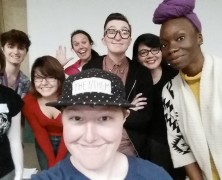
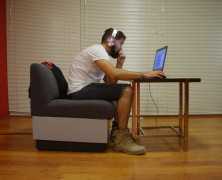

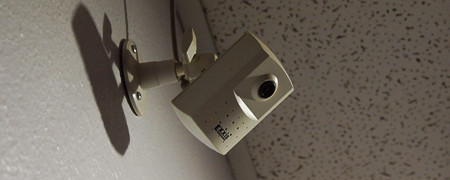
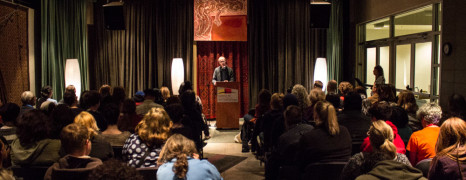
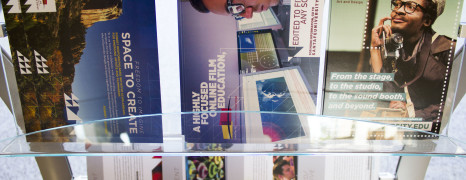
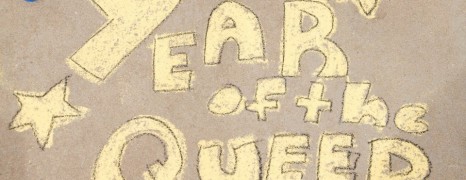
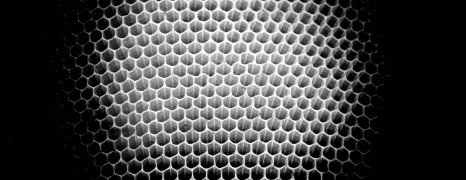
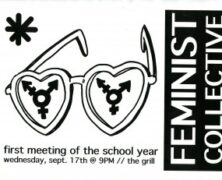
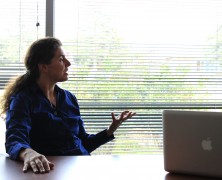
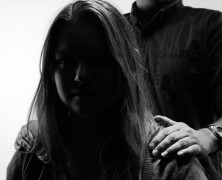
 Jackalope Magazine is the student magazine of Santa Fe University of Art and Design. Building on the interdisciplinary nature of our education, we aim to showcase the talent of our university and character of our city.
Jackalope Magazine is the student magazine of Santa Fe University of Art and Design. Building on the interdisciplinary nature of our education, we aim to showcase the talent of our university and character of our city.
Recent Comments